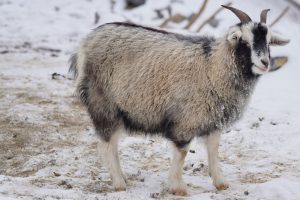From an early decision to close its schools and borders in late January 2020, to its close monitoring and containment of citizens returning from abroad, Mongolia’s response to the COVID-19 outbreak has been markedly successful, with zero fatalities reported thus far. The Mongolian government’s close coordination with multilateral organizations such as the World Bank and UNICEF bolstered these efforts by securing funding for essential medical supplies and public health campaigns. Despite these victories at home, however, Mongolia has still felt the pains caused by the paralysis of global markets; in the first quarter, its GDP has shrunk by 6.1 percent.
Lockdown measures would have a negative impact on any economy under most circumstances. But in the wake of the COVID-19 pandemic, one of Mongolia’s largest industries has been hit especially hard – cashmere. Mongolia produces around 40 percent of the world’s supply of cashmere, its top non-mineral export, with more than a third of the population involved in its production. For years, herders have clamored to keep up with demand for the lucrative raw resource, but with the global textile industry in peril, the market has suddenly dried up.
Over the past few months, numerous pitfalls across the textile supply chain have translated into a steep drop in cashmere prices. At the top, major retailers such as Primark have abruptly canceled orders from manufacturers, in some cases invoking force majeure clauses to justify breaches in contract. In turn, shipments of raw resources from China have been delayed due to the pandemic. Chinese distributors, who buy and resell upwards of 80 percent of Mongolia’s cashmere, have halted purchases and raised prices to make up the difference. Down the line, all these factors have contributed to the price of cashmere plummeting from $39 per kilo in 2019 to $16 per kilo today.
In response to these economic shocks, the Mongolian government has issued subsidies to herders of about $7 per cashmere goat and offered processors lower interest rates on subsidized loans provided they purchase the raw material at closer to 2019 prices. Despite these incentives, cashmere prices have remained low, jeopardizing the herders’ economic well-being. For its part, the private sector has been largely indifferent toward the crisis facing cashmere herders despite promises by luxury good corporations like Kering (owner of fashion brands such as Gucci) to support them.
But there is another dimension that has long haunted the cashmere industry – one that the Mongolian government has struggled to reconcile with since the birth of its democratic government: the toll it has taken on the environment. Desertification and land degradation threatens 77 percent of Mongolia’s landmass, exacerbated by factors such as unsustainable farming practices and, notably, overgrazing by livestock. After Mongolia lifted many of the long-standing quota restrictions on livestock in 1990, its goat population skyrocketed from 5.1 million to 23.6 million in 2015. If left unchecked, unsustainable cashmere harvesting could cause irreversible damage to Mongolia’s sweeping grasslands.
Numerous studies have been presented in the past few years in order to address this sustainability dilemma. The Wildlife Conservation Society’s Mongolia Sustainable Cashmere Project makes use of map images taken from space by NASA and Stanford University to target additional areas of healthy vegetation for herders to spread their flocks and ease stress on the land. Another project by the University of Leicester coordinated by the Mongolian Society for Range Management aims to work directly with herders to find and develop sustainable practices while contributing to carbon sequestration through rangeland management. Many initiatives such as these operate on a small scale but provide promising solutions to a looming threat.
The Mongolian government, too, has taken steps to address the problem. Legislation has been presented on rangeland management by the State Great Khural as recently as 2019, joint ventures with other states like the Swiss Agency for Development and Cooperation’s Green Gold Pasture Ecosystem Management Project have been set up, and a report was commissioned by Mongolia’s Ministry of Environment and Green Development and the Asian Development Bank in 2014 on making Mongolia’s grasslands sustainable. But as is the case in most countries, balancing sustainability with economic growth is a hard sell, especially when it comes to the production of luxury goods.
This is not the first time demand has plummeted for cashmere. During the 2007-2008 financial crisis, the price-per-kilo of raw cashmere fell by half. But the COVID-19 outbreak presents Mongolia’s government with a unique situation: international aid is streaming in, cashmere herders are being floated by government subsidies, and President Khaltmaagiin Battulga is riding into a legislative election on the heels of a successful campaign to contain COVID-19. Such extenuating circumstances were absent 12 years ago, but the current stagnation of the market has created a window for Mongolian politicians to ensure that cashmere production can continue without ruining the land permanently. As odd as it may seem, the best time for Mongolia to pursue comprehensive sustainability measures to curb overgrazing might just be in the midst of a global pandemic.
Jacob Hafey received a Master of Arts in Law and Diplomacy degree with a focus on Pacific Asia and Conflict Resolution from The Fletcher School of Law and Diplomacy at Tufts University.

































